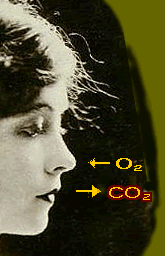 Carbon
dioxide (CO2)
Carbon
dioxide (CO2)
Carbon dioxide occurs normally in Earth's atmosphere in concentrations of about 0.036% (360 parts per million). Because humans breathe out carbon dioxide as a basic byproduct of metabolism, levels can increase if there is poor or no ventilation to the outside air.
When the CO2 level in the air increases:
- At 600 parts per million (ppm), people notice the air is "stuffy."
- At 1000 ppm and up, some people may begin to feel the classic symptoms of carbon dioxide poisoning: shortness of breath, difficulty in breathing, rapid pulse rate, headaches, hearing loss, hyperventilation, sweating, and fatigue.
- 5000 ppm (0.5%). Prolonged exposure to levels above 5000 ppm is regarded as potentially dangerous to human health, especially if accompanied by reduced oxygen levels.
- 15,000 ppm (1.5%). At this level, people can suffer symptoms within an hour or two.
- At 30,000 ppm and up, people can suffer serious symptoms, including nausea, dizziness, mental depression, shaking, visual disturbances and vomiting. If exposure persists, people may pass out, and if levels continue to increase, they may die.
Carbon dioxide (CO2) should not be confused with carbon monoxide (CO). Carbon monoxide, a common product of combustion, is lethal at comparatively low levels: CO concentrations above 400 ppm are life-threatening and above 1600 ppm, will cause human death within an hour.
AN
ACCESS
EXCELLENCE SCIENCE MYSTERY <> ABOUT
THIS STORY